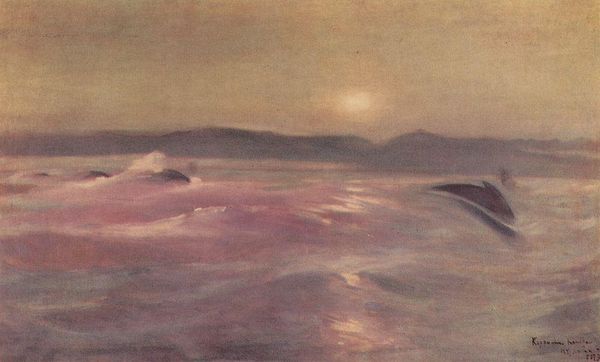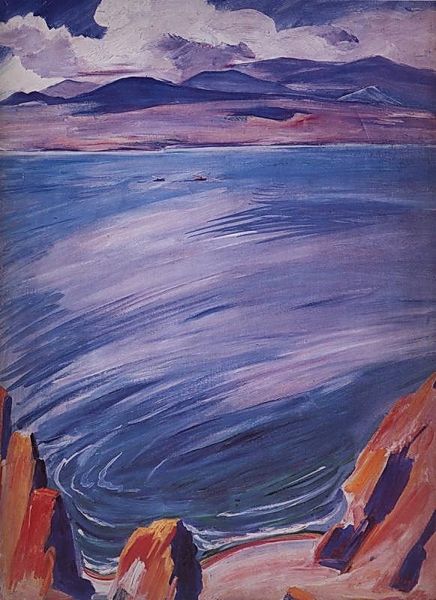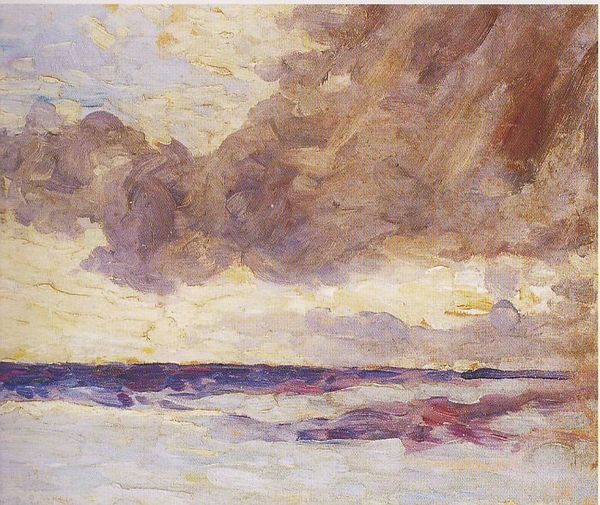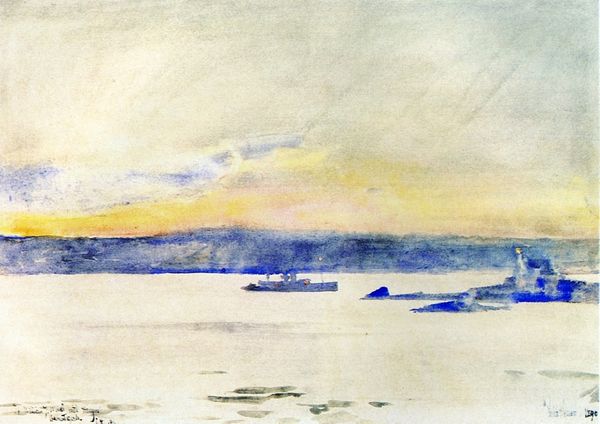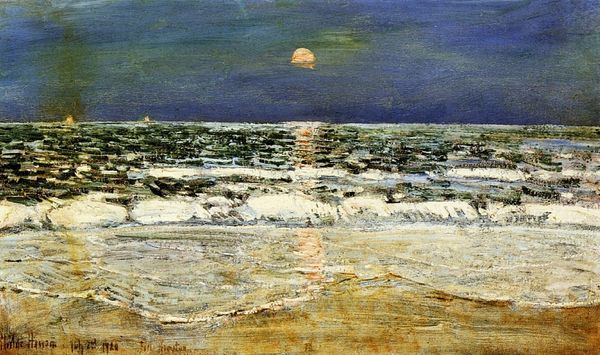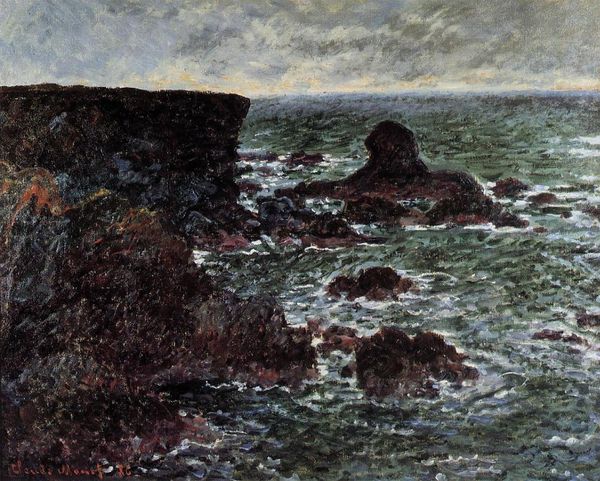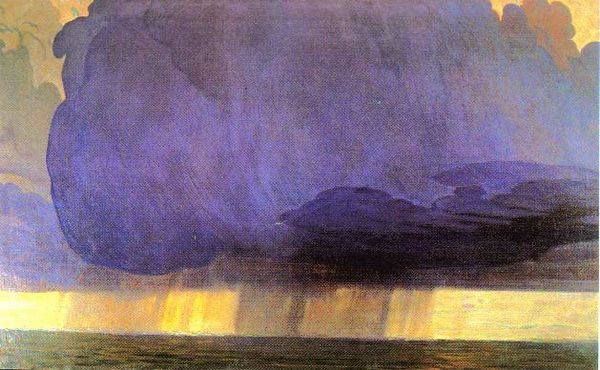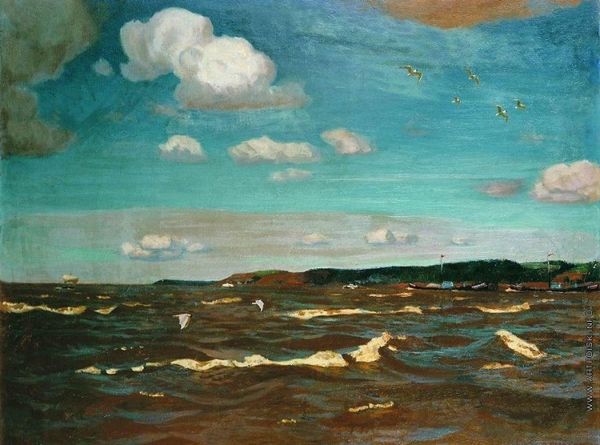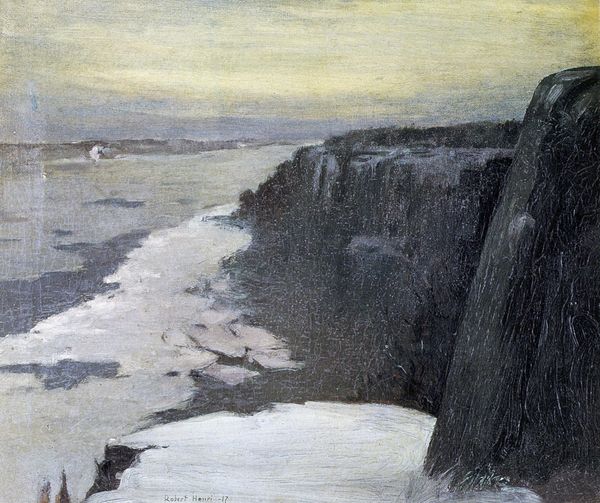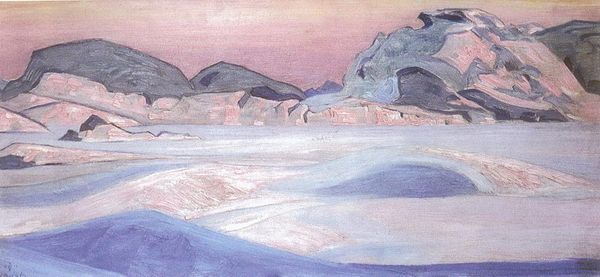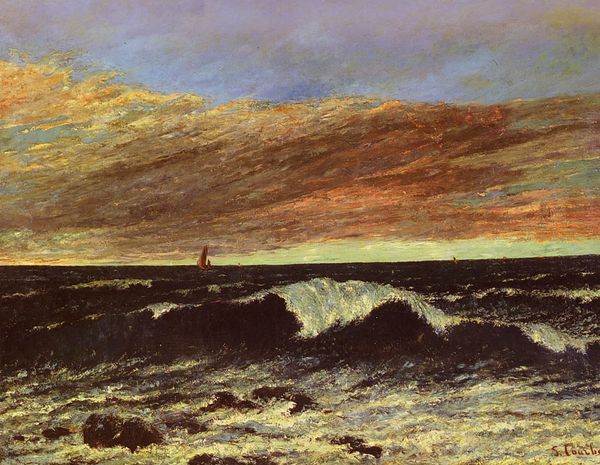
Dimensions: 76.8 x 122.6 cm
Copyright: Public domain
Curator: Winslow Homer's "West Point, Prout's Neck," painted around 1900, offers a compelling look at the Maine coastline. It’s currently housed at the Clark Art Institute. Editor: There’s such a raw, almost brutal energy radiating from this canvas. The stark contrast between the dark rocks and the violent white of the surf immediately grabs you. Curator: Absolutely. It's critical to understand Homer’s background in illustration. This work speaks to a burgeoning industrialization and our complex relationship with nature in the late 19th and early 20th centuries. Consider the availability of mass-produced paints and pre-primed canvases; his access facilitated this direct engagement with plein-air painting. Editor: True, but let's not overlook the composition itself. Homer's mastery lies in simplifying the scene to its essence. Notice the way the horizon line cuts the canvas, creating a sense of compressed space and amplifying the power of the waves. It’s not just about recording nature, but distilling it. Curator: But I also think that overlooking the material conditions that Homer and other American artists during this period were subjected to does great disservice to art history. Understanding Homer’s creative outputs depends greatly on the society he lived in, especially its commercial facets. Editor: That's a valid point, but when I consider the romantic era through a more semiotic frame, I am struck more by Homer’s visual language— the turbulent brushstrokes, the restrained palette, that concentrated focal point formed where sea meets sky— than its historical context. They coalesce into a powerful statement about nature's sublime force. Curator: I believe it reflects the changing dynamic of how art was manufactured and marketed, shaping the narrative. However, focusing solely on the pure aesthetics obscures those key historical relationships and developments in production, labor, and value. Editor: Well, it’s a reminder that art can be appreciated on multiple levels— as a mirror reflecting its socio-economic climate and as a self-contained aesthetic experience, don't you agree? Curator: Of course. I would say understanding this is a process, with endless information constantly updating it; not some closed-off epiphany!
Comments
No comments
Be the first to comment and join the conversation on the ultimate creative platform.
